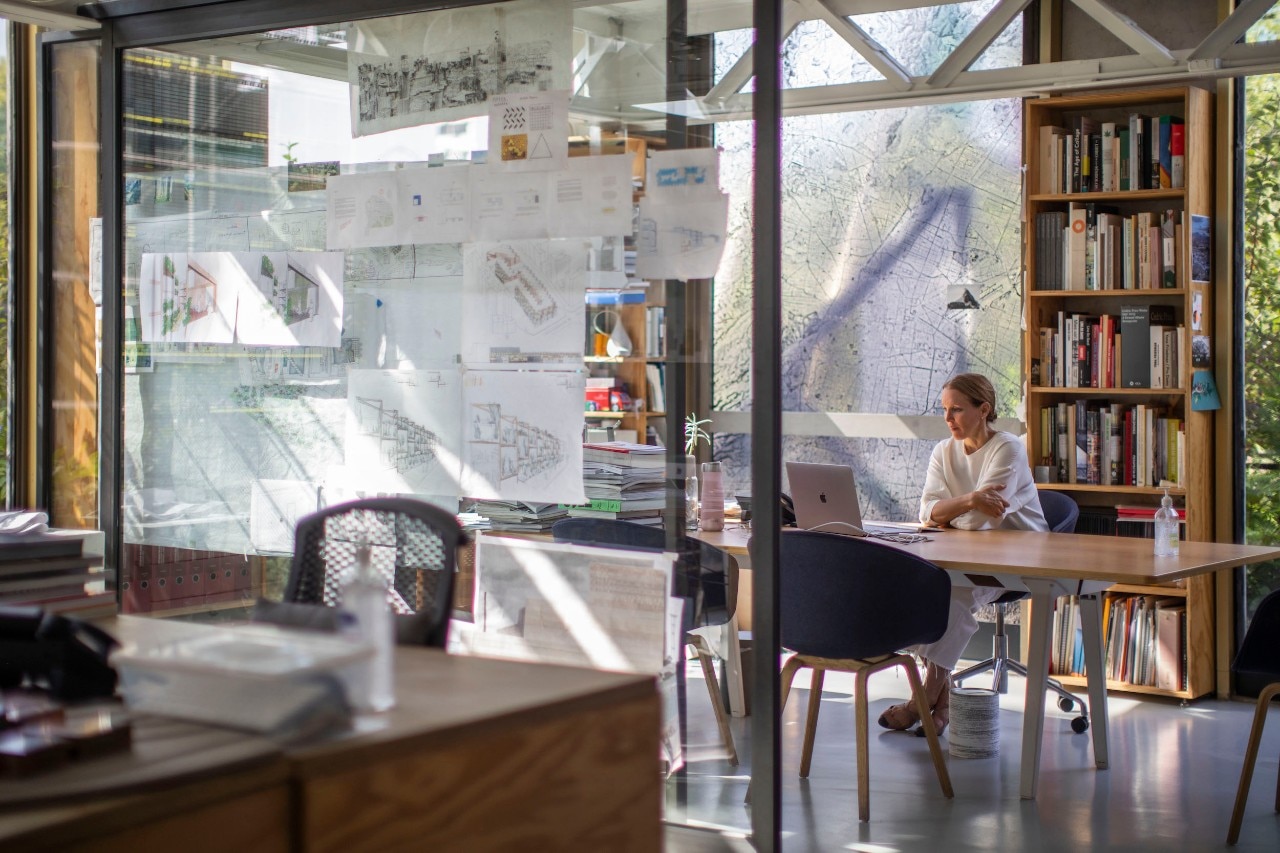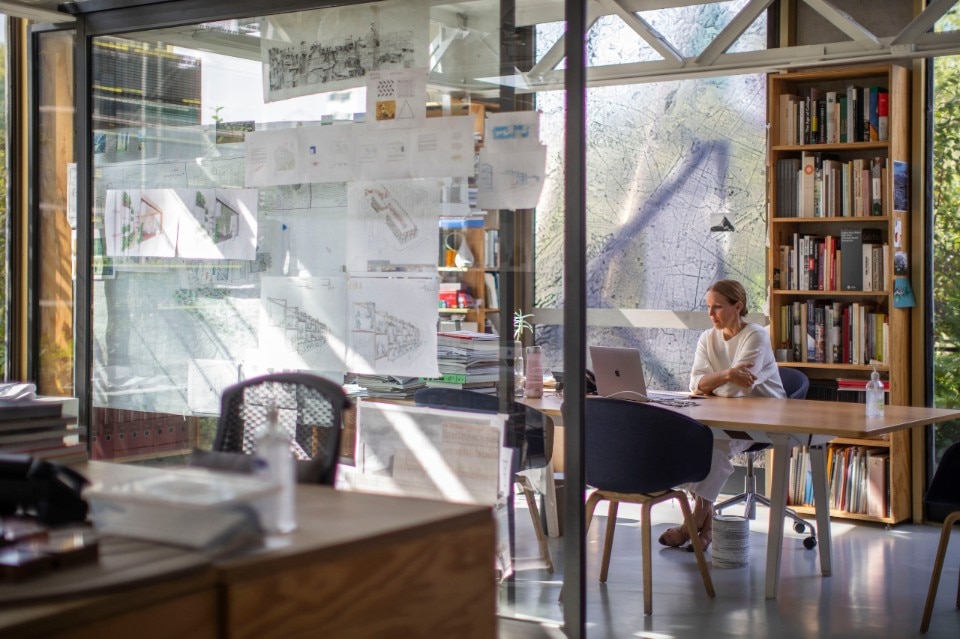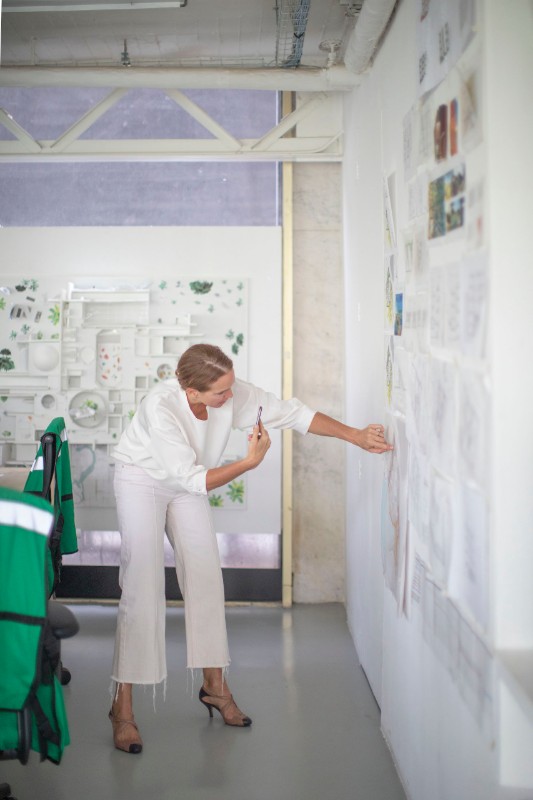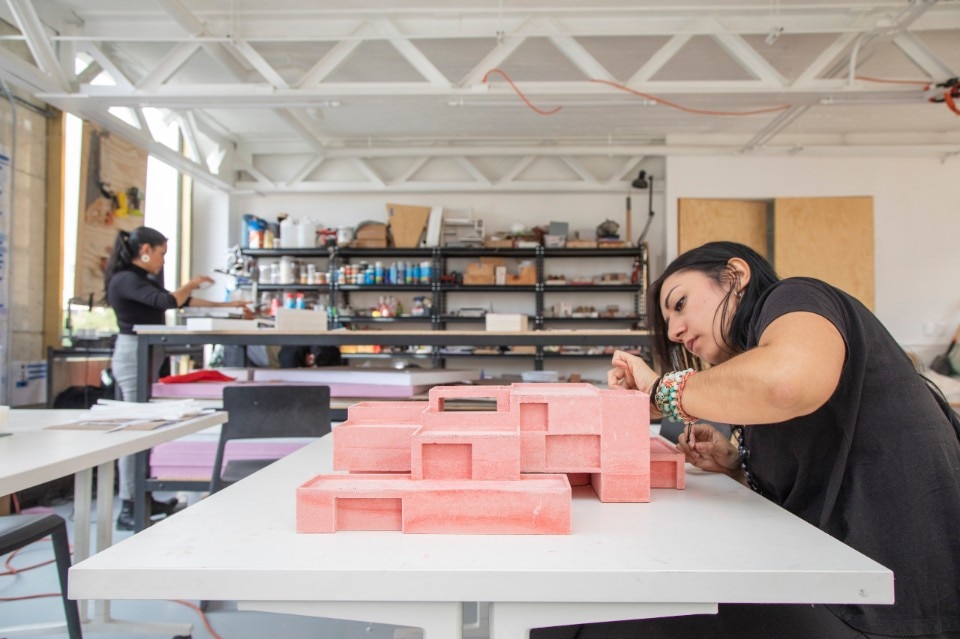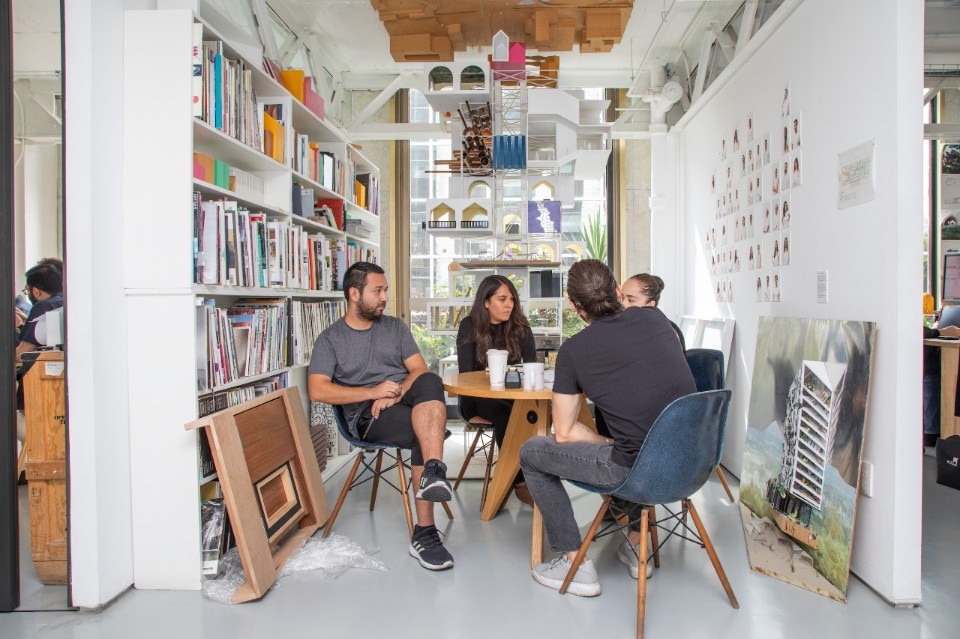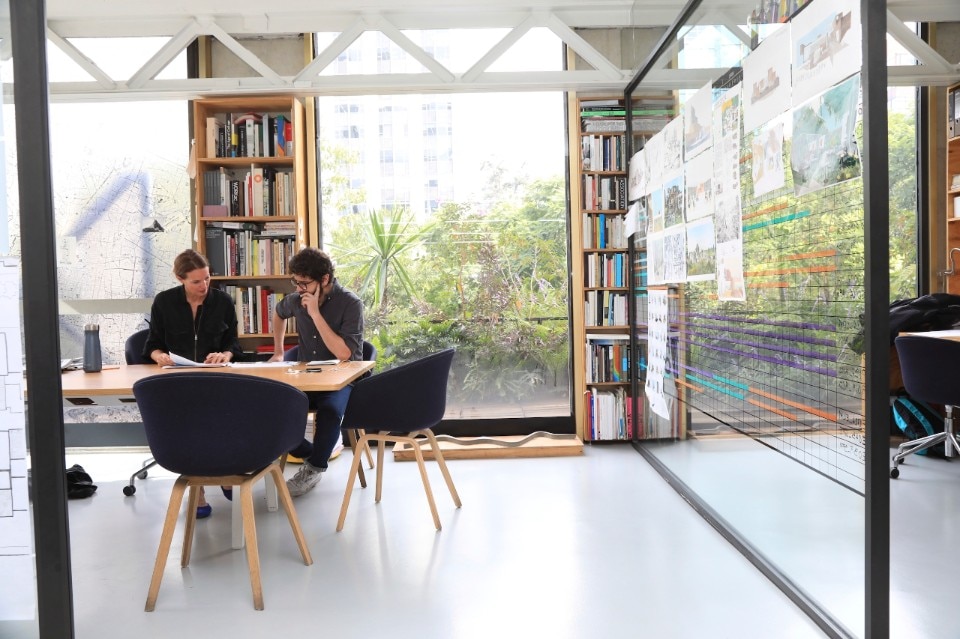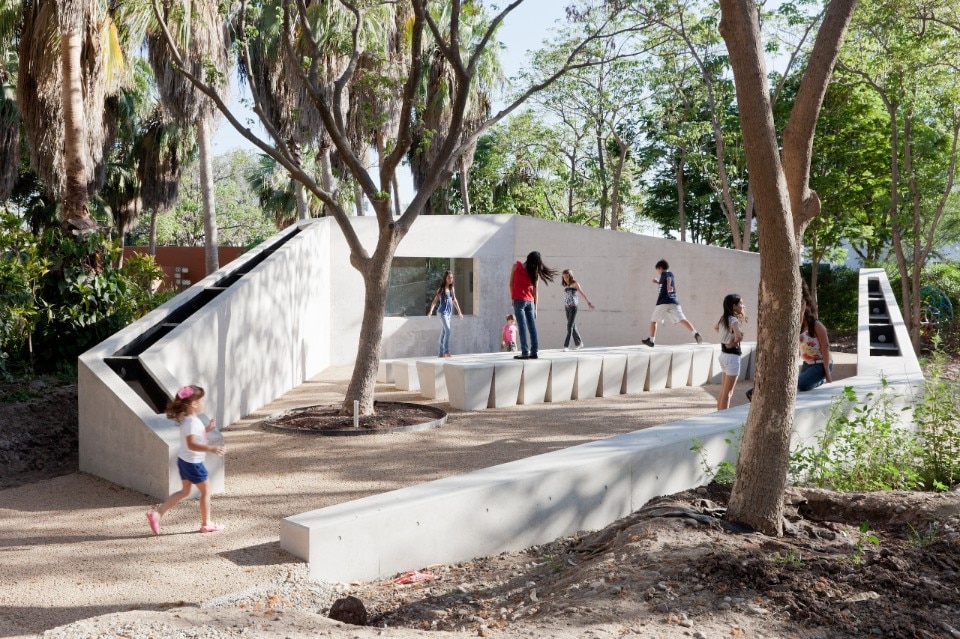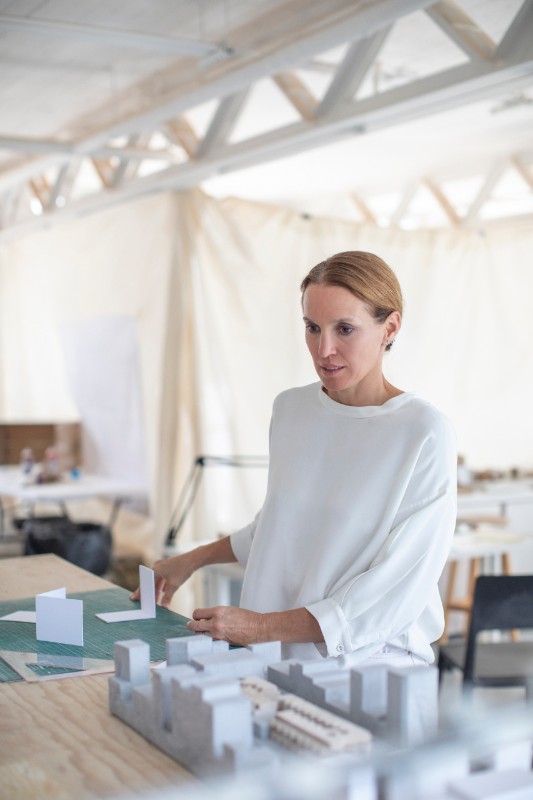This article was originally published in Domus 1047, June 2020.
My visit to Tatiana Bilbao in her studio in Mexico City was conducted virtually. At the time of our discussions, Mexico was in the middle of lockdown and most of the studio were working remotely from home. During our conversation, she “walked” me through the largely empty studio as we discussed the various projects they are working on, the surrounding city, and how she runs the office of approximately 50 people along with her partners David Vaner and Catia Bilbao (her sister). The work she shows and discusses ranges from housing, both private and social, to larger institutional projects. They are spread across Mexico and around the world, among them: a Cistercian monastery in Germany; a museum in Arévalo, Spain; a private housing development in St. Louis, Missouri; a complex neighbourhood plan in San Francisco.
From the windows of the studio and its generous terraces, we look over the great urban avenue of Paseo de la Reforma, one of the most representative public spaces of Mexico City, as well as the financial and business district. Clearly Tatiana Bilbao enjoys the slight paradox of her creative studio being located in such a significant and important location. From here she enjoys her dual role as a Mexican architect working internationally, and an international architect grounded in the rich culture and particular conditions of Mexico.
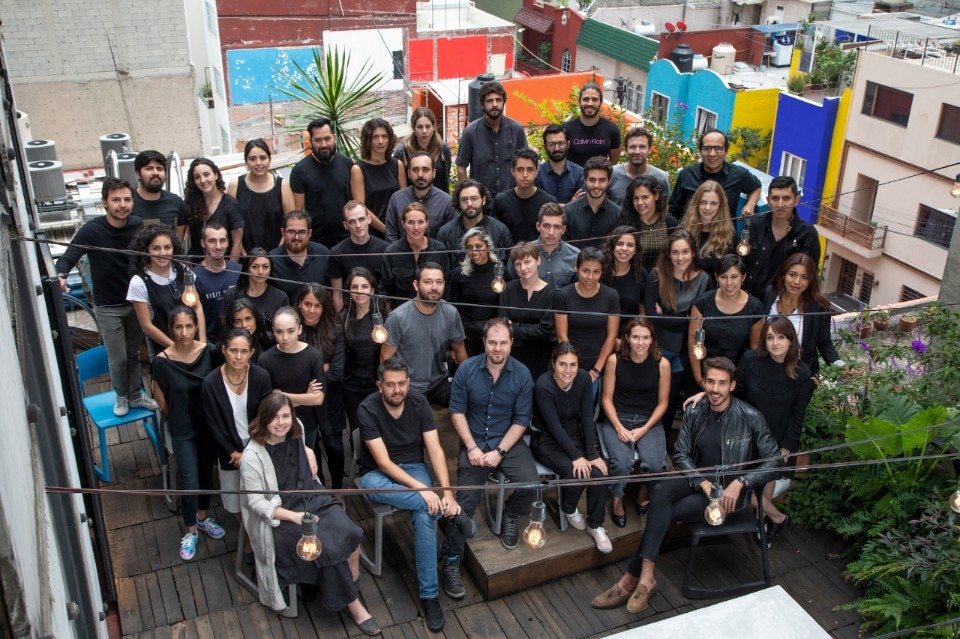
Not only is the studio working extensively on a global portfolio of projects, Tatiana Bilbao is also a visiting professor at Yale – she has also taught at Harvard, Columbia and Rice – and the studio has exhibitions (not currently open to the public) of their work at the Louisiana in Denmark (opened in October 2019) and at the San Francisco Museum of Modern Art (due to open in October 2020). While working abroad may be partly in response to commercial pressures, it is certainly also part of a more complex idea of cultural interchange in architecture today. There can be no doubt that a developed international recognition can help professional status in Mexico, but it must also be true that her deep regional understanding of a different set of issues in her immediate context gives her a voice and well-grounded credibility in that international scene.
Speaking to Tatiana Bilbao, there is a sense of pride in being a Mexican architect, and the professional solidarity that she enjoys with her contemporaries such as Frida Escobedo, Fernando Romero, Michael Rojkind, and a strong connection to the country’s art community – her first project was for the artist Gabriel Orozco. It is “a very knitted together community”, she says, “because the formal institutions don’t help”. I have the impression that this self-constructed community is reinforced by a sense of belonging to an extraordinary lineage of Mexican architects, confirming the cultural role and status of architects in Mexico, as well as maintaining strong discourse on the purpose and the role of architecture in changing their country. Few countries can boast such an important modernist heritage with Luis Barragán, Félix Candela, Pedro Ramírez Vázquez, Ricardo Legorreta, Francisco J. Serrano, José Villagrán García, Juan O’Gorman, Mario Pani, Enrique del Moral, Agustín Hernández Navarro, Teodoro González de León, Abraham Zabludovsky, to name just a few. Boosted by the patronage of the government in the 1940s and 1950s as they sought to build an image of modernity, these architects developed a local modernism rooted in the movement’s universal social ambitions and in response to the realities of their surrounding context. The lineage has continued through to contemporary masters such as Alberto Kalach and Enrique Norten and is alive today in this new, younger generation despite the different political terrain in which they operate.
Addressing poverty is the context of Mexican architects
My overriding interest in this series of interviews about practice is to discuss the conflicted situation in which we as architects find ourselves as we try to define the priorities of our professional role. Responsibilities which concern not only intellectual and formal enquiry, but environmental and social issues too, while maintaining a viable commercial position. Talking to Tatiana Bilbao, I was interested how an architectural practice like hers in a country of such inequality – 60 per cent of the population is living below the poverty line and 80 per cent classified as poor – addresses this. Naturally, the agenda to bring that 80 per cent of the population into a more formalised system of housing in particular is “very conflicted”.
While poor quality of housing is a universal problem, in Mexico this is so explicitly visible in the proliferation of dense informal settlements on the edges of towns and cities. Conversely, the privileged protect themselves behind layers of security in “hyper-individualistic” gated communities, creating another layer of isolation and deepening social division. Tatiana Bilbao explains that the provision of “enjoyable and dignified housing” for all has enshrined a constitutional right in Mexican law since the 1940s, and the Mexican government is still committed to this responsibility. However, while this is difficult to deliver, as everywhere else, it also now tends to bring the concerns of the public sector, housing requirements and those of the commercial market into a complex and unsuccessful conclusion.
Over the last 40 years, the state has relied on private developers to provide formal housing to the masses, which is purchased through government-backed mortgage lenders. While this has been financially profitable for the investors and convenient for the administration, it is invariably poorly built and badly located. By the beginning of this century, thousands of homes were abandoned as people preferred to build themselves illegal and informal housing in more convenient locations. Paradoxically, this more organic organisation of housing allows people to improvise and adjust to their needs. This contrast between repetitive and thoughtlessly planned commercial housing and the more improvised solutions emphasises the necessity of intelligent planning that considers infrastructure from a more complex and social perspective.

Tatiana Bilbao has undertaken private research into addressing the failings of these large-scale housing developments and design standards throughout her career. Her first job was as an advisor in the Ministry of Development and Housing of the government of the Federal District of Mexico City. During this period she was part of the General Development Directorate of the Advisory Council for Urban Development in the City. While she later became disillusioned with the politics of the office and went on to start her own practice in 2004, she has remained committed to raising awareness of the value of good planning and improving the quality of housing delivery processes, and the wider living environment.
Realising that neither the government nor developers were going to actively solicit the architectural profession’s opinion, she gathered together colleagues and lobbied government while also finding opportunities in each project – regardless of the client – to demonstrate the value of a more human-centred approach to design. They were largely dismissed at first. She recalls being told that the solution was to educate the poor to simply become better product consumers in a capitalist marketplace. But when a new government was ready to confront the issue and to listen, they were prepared.
Tatiana Bilbao taps into the contemporary cultural energy as well as the lineage of Mexican modernist architecture
In Aguascalientes, a poor but well-planned town, they are working on a master plan for an area spanning 15 per cent of the city’s total size to provide much-needed infrastructure and services, as well as mediating between different neighbourhoods. At the same time, in the privileged area of Monterrey, the studio is working on a housing project that reflects the other side of the problem where people are living “hyper-individualist lives”. In a fairly unprecedented move for the area, the housing project of 164 units is porous and arranged in clusters around shared facilities to encourage interaction between residents, as well as better integration with its context of local businesses and services. In the end, they hope to have created a sense of place and an awareness of each other.
For Tatiana Bilbao, consistency of approach and a clear focus is vital for navigating practice in a neoliberal system and restoring credibility for the profession. “I don’t think it’s bad to work with the rich, and I always explore those projects. Usually they involve a large commitment to public space. We like to always push the boundaries.” Sometimes the lack of effective planning and government has worked in their favour too. In the botanical garden project in Culiacán, they’ve “done whatever [they] wanted over 15 years”. Working with the locals over this extended time has helped them to understand the value of community participation in the design process, and to realise that even the best intentions can be wrong.
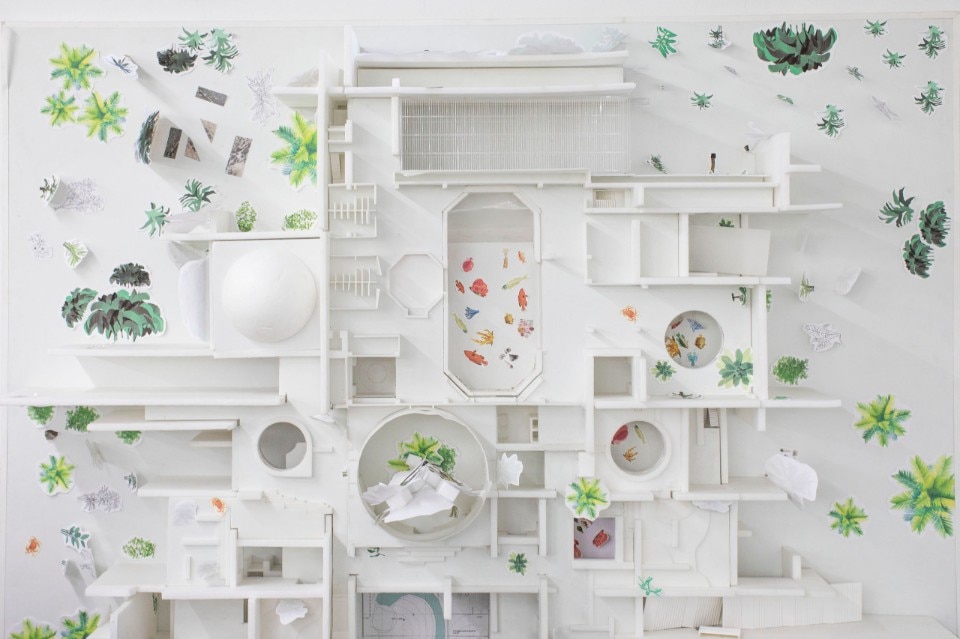
Tatiana Bilbao explained that last month the Mexican government announced a new scheme providing an allowance to people directly to build their own houses, partly in recognition of the mass
abandonment of poorly planned formal developments with little or no social infrastructure. While this is a good step away from dependency on developers, where does this leave the architect? She is cautious about the proposal given that there will be less control on the self-built homes and warns that a lack of construction skills and a market flooded with cheap materials led to millions of homes collapsing during the devastating 2017 earthquake. There is clearly a need for a middle ground, with architects contributing to planning, coordinating design participation and developing house prototypes that might offer independence, security and quality of life. This discussion leads inevitably again to the issue of defining practice through the selection of work, the mixture between academic and practical priorities, form and process.
Tatiana Bilbao has remained committed to raising awareness of the value of good planning
It is clear that practice is all-embracing and it’s difficult not to be impressed with the clarity and agility of an office that is committed to the idea that architecture contributes to the quality of our lives, its beauty and its purposefulness. The approach of the studio acknowledges the fact that architects are both protagonists as well as instruments meandering between aesthetic, professional and intellectual enquiry, and that the role we have is not given to us. Rather, it is one we have to make and define for ourselves, inspired by previous models and based in current circumstances. The studio of Tatiana Bilbao clearly taps into the contemporary cultural energy as well as the lineage of Mexican modernist architecture in this regard. In an unassuming and matter-of-fact way, the studio rightly sees the challenges of contemporary society, especially that of housing, as part of their professional circumstance and responsibility. “In Mexico, architects are not doing social work,” she says, “they are just working in their context. Addressing poverty is their context.”


